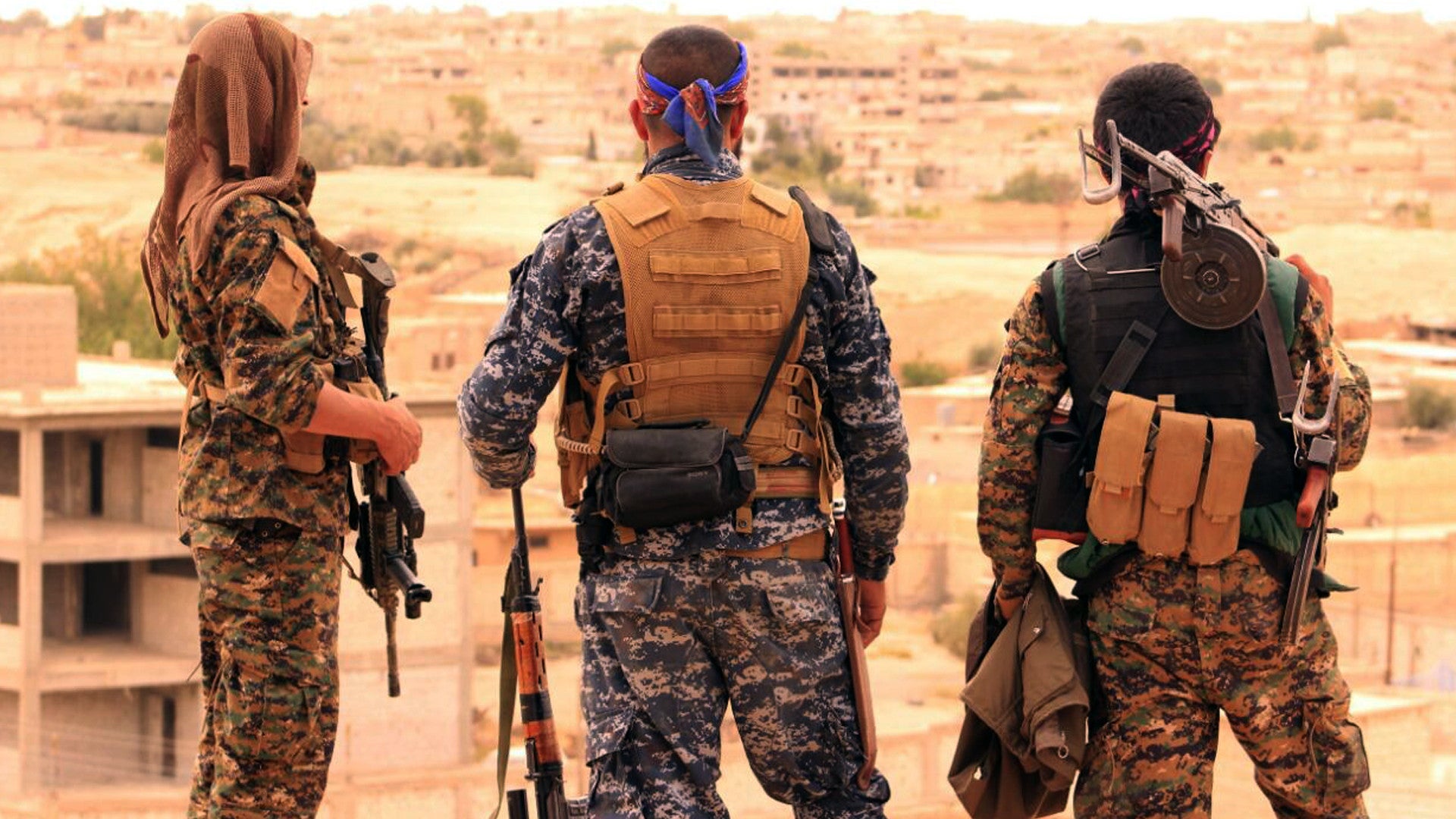Russia appears to be moving ahead in enforcing safe zones in Syria, which could potentially conflict with the United States’ fights against both ISIS and Al Qaeda in the country. At the same time, the U.S. military still seems to be gearing up to support Kurdish and Syrian rebels in a major offensive to liberate the city of Raqqa from terrorist fighters, a plan that has drawn the ire of Russian, Syrian, and Turkish officials, as The War Zone has already reported in detail.
On May 3, 2017, the commercial ImageSat International (ISI) Eros B satellite captured imagery of what appeared to be a Russian Air Force Beriev A-50 Mainstay radar plane at Hmeymin Air Base. DefenseNews was the first to publish the images. This would have put the aircraft at the base, which the Kremlin has been actively using to support the Syrian regime of Bashar Al Assad since September 2015, just days before officials in Moscow announced the establishment of what it also referred to as “de-escalation zones.” These areas covered much of Syria’s Idlib Governorate, a portion of territory to the south between the contested cities of Hama and Homs, and a buffer space along the country’s southern borders with Israel and Jordan.
“In the de-escalation zones, warfare between the government troops and armed opposition units joined or are to join the ceasefire regime is being stopped,” Colonel General Sergei Rudskoy, head of Russia’s Main Operational Directorate, said at a press conference on May 5, 2017. “Not everybody appreciates it,” Russia’s Deputy Defense Minister Lieutenant General Alexander Fomin added.
Fomin specifically mentioned the United Nations, the United States, and Saudi Arabia – which Russia views as a major benefactor of Sunni militants and extremist groups in Syria – as well as unspecified “other countries” as the parties who were not thrilled with the agreement. The safe zones were part of a larger cease-fire arrangement that representatives from Russia, Iran, and Turkey had ironed out during meetings in Kazakhstan’s capital Astana. According to Rudskoy, troops from those three countries would act as observers and guarantors of the peace.
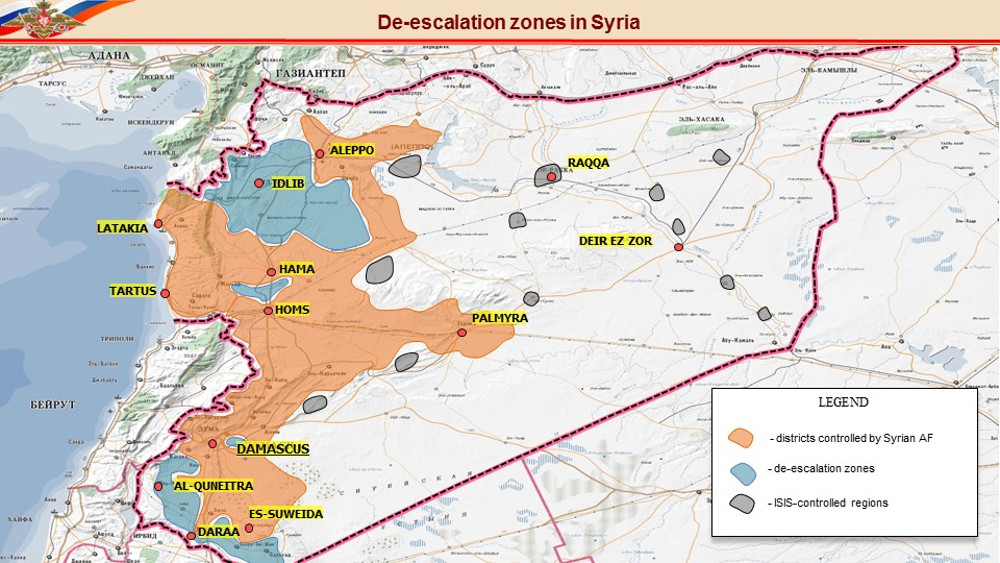
Russian-backed no-fly zones
At least nominally, the safe areas are supposed to include no-fly zones, which in turn could potentially preclude American warplanes from attacking ISIS and Al Qaeda fighters inside the designated spaces. The A-50 would be a key component of monitoring and enforcing those restrictions. Russia had sent one of these aircraft to Hmeymin with the rest of its forces in late 2015, but pulled it out as part of a limited withdrawal in March 2016.
Analogous to the U.S. Air Force’s E-3 AWACS, the Mainstay has a large radar on top of the fuselage mounted inside a rotating dish. In 2008, the Russian Air Force began evaluating an upgraded variant, which subsequently entered service as the A-50U. This version featured new, digital avionics, improved target detecting and tracking capabilities, and more powerful computers to process the data. These aircraft can spot and track multiple aircraft at a time, as well as detect low-flying cruise missiles.

Russia’s air arm expects to begin testing another significantly updated version, the A-100, which will have an all-new, fast-scanning active phased array radar (APAR) in July 2017. Though there is no clear evidence available to confirm this, Russian sources boast that this aircraft may be able to detect even stealth fighter jets such as the F-22 Raptor. However, if accurate, these improved capabilities would be important for Russia’s operations in Syria. On April 6, 2017, the U.S. Navy fired dozens of Tomahawk cruise missiles at Syria’s Shayrat Air Base following an alleged chemical weapons attack on civilians in the city of Khan Sheikhoun. In addition, the U.S. Air Force has routinely employed the Raptor to attack ISIS in Syria with relative impunity. The Kremlin hopes to have the A-100 in operation by sometime in 2018.

In the meantime, the A-50 and air search radars associated with Russia’s expanding air defenses in Syria provide the most aerial coverage and early warning capabilities. As of April 2017, Moscow had one S-300 surface-to-air missile battery situated at the country’s naval base at Tartus and an S-400 unit at Hmeymin, along with other shorter range weapons such as the Pantsir-S gun-and-missile system. The Russian Air Force could also respond to intrusions with its own advanced fighter jets, including the latest Su-35 Flanker-E, which it has in the region. After the attack on Shayrat, the Kremlin declared plans to provide Syrian government forces with improved anti-aircraft weapons, too.

Despite these defenses, it was not immediately entirely clear, however, if and how Russia and its partners in the de-escalation move expect to engage American aircraft that defy the no-fly zones. In their statements, Fomin and Rudskoy seemed to play down this possibility and offer loopholes to avoid confrontations.
At the official press conference, Fomin actually praised the American-led air campaign against ISIS in Syria, listing it as a factor that had enabled the establishment of the safe zones in the first place. He said the counter-terrorism effort, along with the “improvement of [the] humanitarian situation,” would ultimately promote “creation of conditions promoting political settlement of the conflict.”
In addition, “It is to be stressed that signing of the Memorandum on creation of the de-escalation zones in the Syrian Arab Republic does not stop fighting against terrorists of the ISIS and Jabhat al-Nusra in Syria,” Rudskoy noted. “State-guarantors undertake to continue fighting against formations of these and other terrorist organizations in the de-escalation zones as well as provide assistance to the government troops and armed opposition in fighting insurgents in other areas of Syria.”
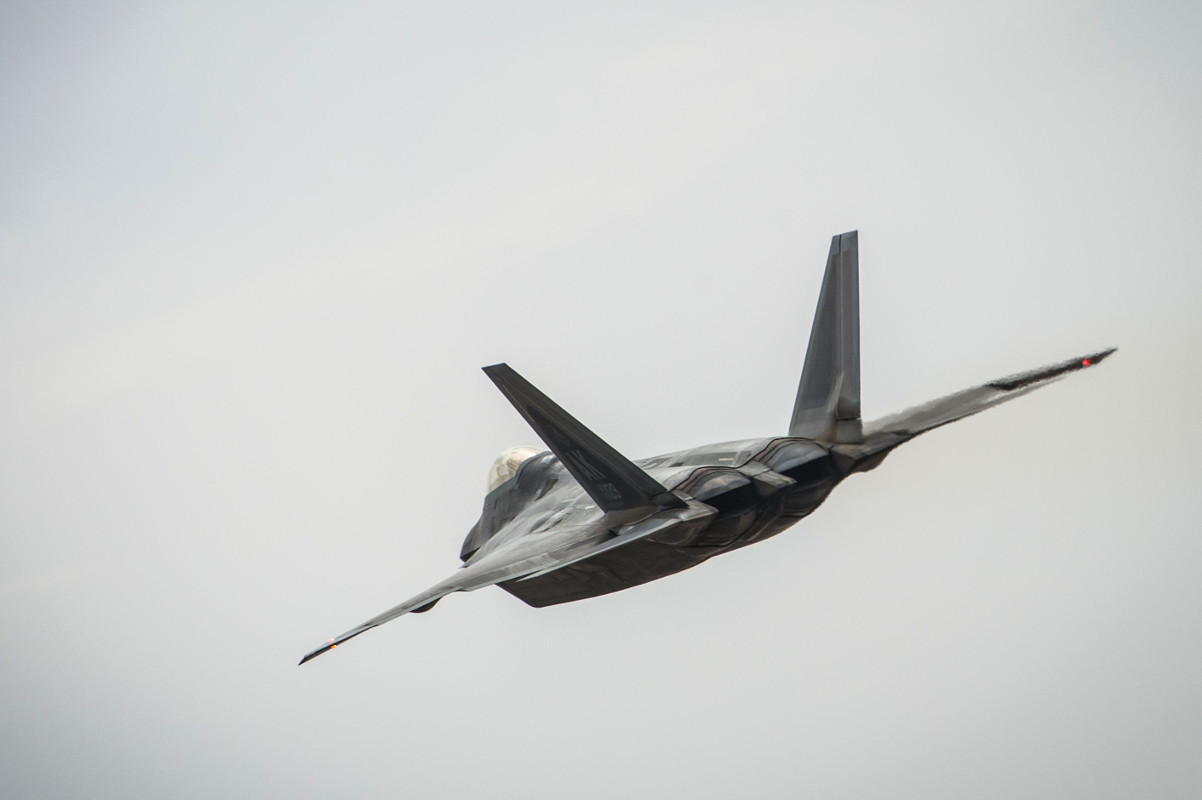
American operations continue in Syria
Russia’s primary representative at the Astana gathering, Alexander Lavrentyev, insisted the ceasefire’s provisions only meant the United States could continue to operate in the country in general. The de-escalation zones would still be off limits to anyone.
“The operation of aviation in the de-escalation zones, especially of the forces of the international coalition, is absolutely not envisaged, either with notification or without,” he declared. “This question is closed.”
In response, the United States said it had not changed its operations in any way to accommodate the new agreement. “The coalition will continue to target ISIS wherever they operate to ensure they have no sanctuary,” Marine Major Adrian Rankine-Galloway, a Pentagon spokesman told Fox News.
“The coalition will continue to strike ISIS targets in Syria,” a State Department official separately explained to The Wall Street Journal. “The campaign to defeat ISIS will continue at the same relentless pace as it is proceeding now.”
On May 6, 2017, the day Russia said the de-escalation plan would come into effect, officials in Moscow and Washington did formally agree to restart a hot-line to prevent future air-to-air incidents over Syria. Russian officials had previously stated they had stopped participating in the scheme after the American missile barrage on Sharyat.

It’s worth noting that the safe zones are located in areas that the United States has only infrequently operated in to begin with. Idlib Governorate in particular has been a hotbed of anti-regime rebel activity, but has historically had a limited ISIS presence. Instead, American air strikes in the area have been part of a separate, shadowy campaign to kill or capture Al Qaeda members taking advantage of Syria’s instability. After multiple reports that the strike had destroyed a mosque and killed dozens of innocent civilians, the Pentagon announced it had launched an investigation into the incident, which it initially claimed only killed numerous terrorists. Other areas in western Syria have been largely off limits to manned coalition assets since Russia installed its S-400 air defense system at Tartus on the Mediterranean coast.
The focus of the American-led campaign against ISIS has been further east, in and around the city of Raqqa. Since 2014, the city has been the terrorist group’s de facto capital. The map the Russians showed at their own briefing on the safe zones pointedly showed all of northwest Syria as outside government control.
It’s also worth pointing out that the safe areas in southwestern Syria match where many of these Israel Air Force operations have occurred. In 2017, the IAF stepped up raids on Hezbollah arms transfers in Syria, which resulted in fairly extreme saber rattling between the two long-time foes. Israel’s most recent strike at a weapons dump near Damascus International Airport appears to be under, or right on the edge of, one of these new zones. If the country continues to wade deeper into the Syrian mess, then these no-fly zones might eventually impact those operations.

A fragile ceasefire from the beginning
Regardless of how or if the Russian-sponsored plan changes the face of the American-led coalition’s aerial bombardment of Islamic State, there’s no guarantee the safe zones and associated cease-fire will hold for any protracted period of time. Previous attempts to end the fighting and provide space for a peaceful resolution of the long-running civil war all ultimately proved fruitless.
Rebels and the government in Damascus had a hard, if not impossible time finding common ground during negotiations in 2016. Assad himself remains the main issue. Insurgents, each with their own specific demands, have generally come to the conclusion that a lasting peace is incompatible with the dictatorial leader remaining in power.
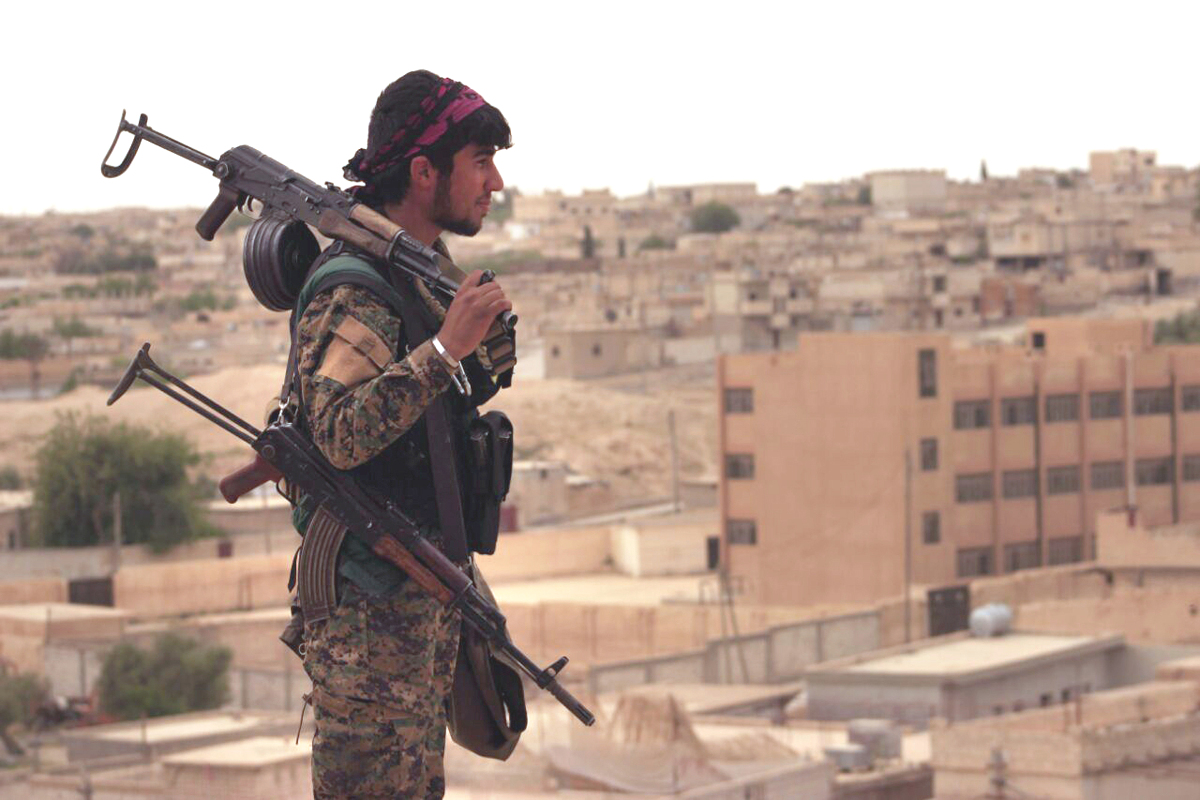
On the other hand, Assad is unlikely to ever be willing to negotiate himself out of power and into a position where he could end up in front of an international tribunal to face charges of war crimes or crimes against humanity. In addition, the Syrian government and its Russian and Iranian allies have taken the position that most, if not all of the rebels fighting the regime in Damascus are actually terrorists aligned with ISIS or Al Qaeda’s franchise in the country, al-Nusra, as a way of discrediting their legitimate grievances.
Given the official Russian explanation of the plan, this rhetoric would seem to give Syrian forces and its foreign partners the necessary latitude to continue attacks on rebel held areas, even within the de-escalation zones. Opposition groups could easily be wary about signing on to a deal where they have no obvious protections from violations by the agreements so-called “guarantors.”

On top of that, Syrian rebel factions who Russia and its partners invited to join the talks in neutral Astana were particularly vexed by Iran’s participation in the gathering. Iran, and Shi’ite proxy groups such as Hezbollah, have been both key to the survival of Assad’s regime and responsible for a particularly brutal campaign against rebel groups on the ground.
“Iran is a country that is killing the Syrian people and the killer cannot be the rescuer,” Abu Osama Golani, a rebel commander who attended the meetings before walking out in protest, according to CBS News. “If this [negotiating] table does not lead to solutions, we will return to the gun,” Osama Abo Zayd, a spokesman for the Syrian rebel delegation in Kazakhstan, said.

Turkey’s regional calculus
Then there’s the matter of Turkey’s complex position in Syria. In spite of previous calls for Assad to step down and support for ethnic Turkmen rebels, Turkish authorities have become increasingly flexible on many of these points, so long as it means Kurdish groups do not gain a greater foothold in northern Syria.
Since the beginning of 2017, Turkey has only made it increasingly clear it will not accept any scenario that involves the People’s Protection Units, better known by their Kurdish acronyms YPG and YPJ, taking control of any significant amount of territory. Turkish officials see the YPG and YPJ as directly linked to the Kurdish Worker’s Party, or PKK, which it sees as a domestic terrorist group.
As a result, Turkey’s concerns about the Kurds has pushed the country’s government closer to Russia and threatened to derail the U.S.-backed push toward Raqqa. Though it has designated the PKK as a terrorist organization, the United States views the YPG and YPJ as distinct and separate entities who are important allies in the battle against ISIS in Syria broadly.
“I don’t think we’re going to change the demographics of Raqqa by Kurds or Turkmen or any group participating in the operation,” U.S. Army Lieutenant General Stephen Townsend, in charge of all American forces fighting ISIS, told reporters on March 1, 2017. “I expect that probably all types of Syrians in northern Syria will participate in the liberation of Raqqa.” At the same press conference, the U.S. officer insisted that the YPG were not a threat to Turkey and had no intention of attack or trying to seize Turkish territory.
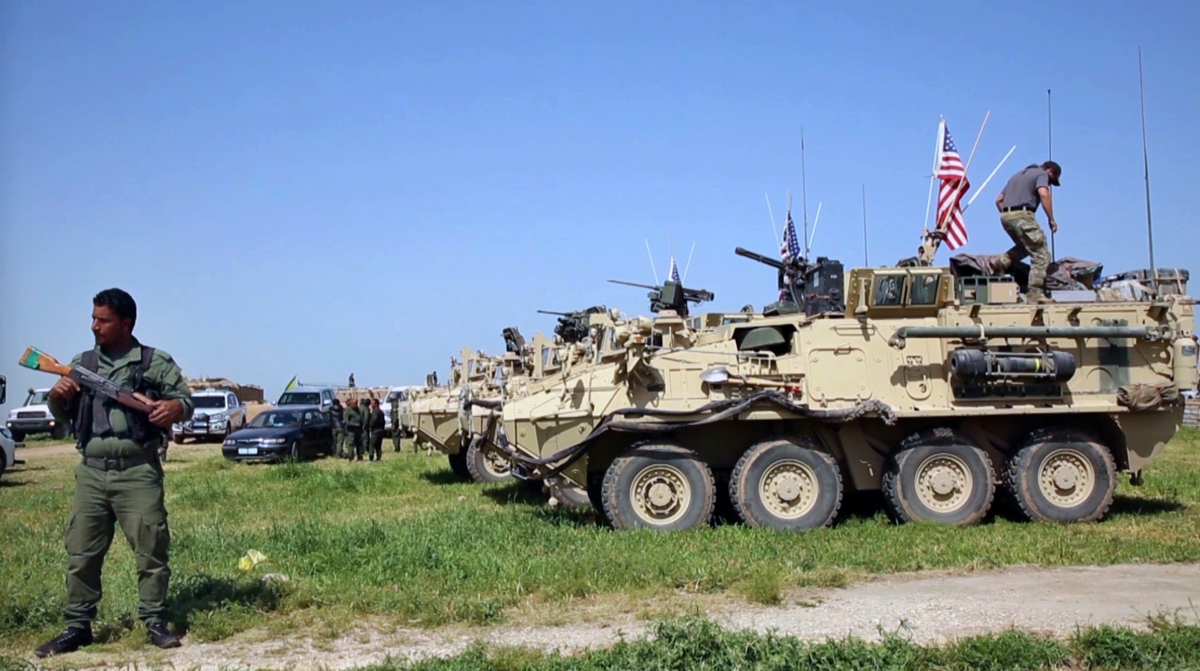
The two countries have been unable to reach a consensus on the situation and the Turkish military has launched a number of air and artillery strikes on Kurdish positions, despite American support. So, beginning in March 2017, American special operators in Syria have been trying to keep a precarious peace, even mixing very openly with YPG and YPJ units to ward off attacks. Turkey responded with veiled threats and more direct action, reinforcing that its primary concern is Kurdish ascendance and not the maintenance of its long-standing foreign relationships. On April 25, 2017, a Turkish air strike hit Kurdish targets six miles from where U.S. forces were positioned in Syria.
“We won’t be considering the fact that there are armored American vehicles,” Ilnur Cevik, a senior political advisor to Turkey’s President Recep Erdogan, said in a radio interview earlier in May 2017. “All of a sudden, by accident, a few rockets can hit them.”
The YPG’s general commander said the Turkish strategy could backfire and its alliance of convenience with the Russians could lead to confrontations with Arab rebels, as well. Haven’t you noticed how major rebel units that were once supported by Turkey are melting away because of this Turkey-Russia cooperation?” he told Al-Monitor.
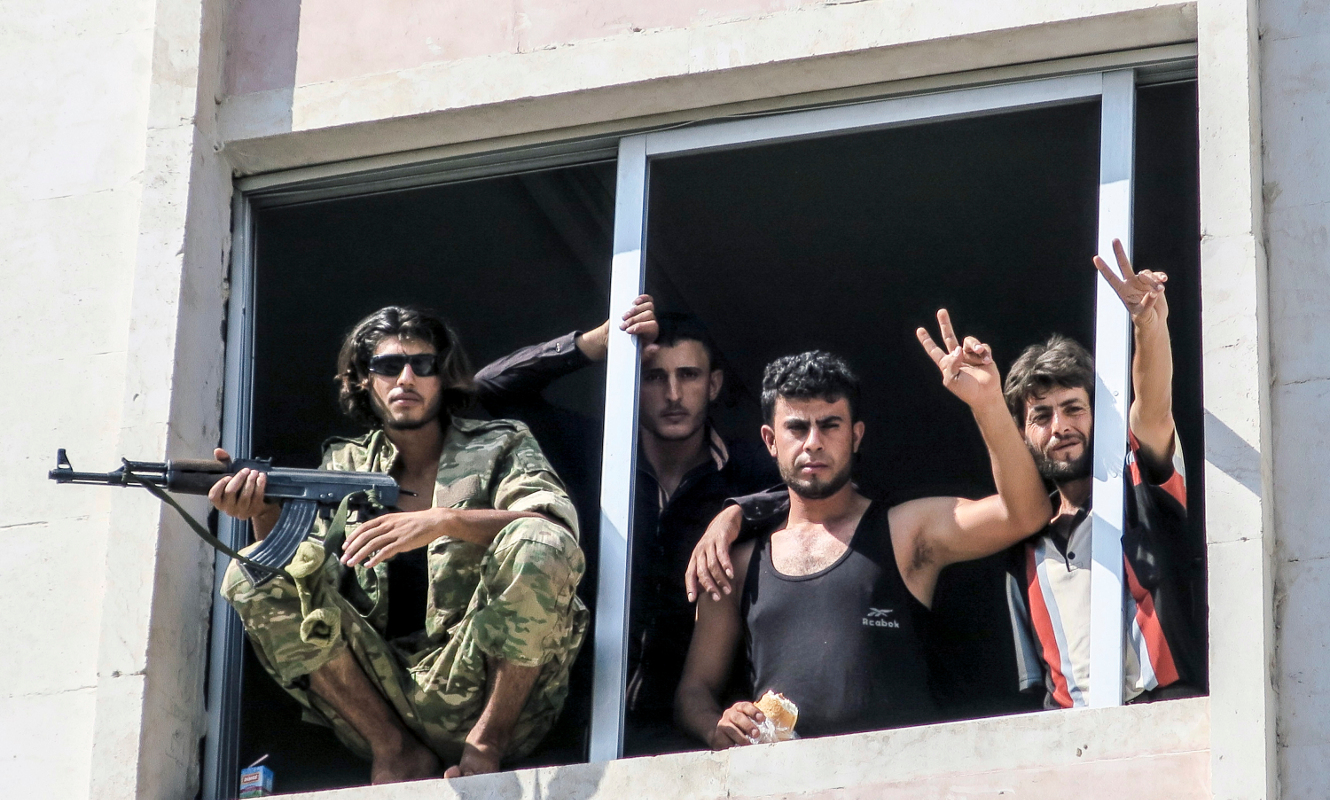
None of this bodes well for Erdogan’s visit to the United States or the situation on the ground in Syria. The Turkish president is expected to reiterate to President Donald Trump that his country will not accept Kurdish participation in the liberation of Raqqa, while there are reports the American administration will tell him that the Kurds will be a part of the operation with or without Turkey’s consent.
It’s unclear if Russia’s de-escalation zones or the associated ceasefire would change either side’s calculus, either. U.S. officials have been cautiously optimistic about the proposal, but have made it clear they’re not going to let it get in the way of existing plans.
“Does this proposal have a hope for ending this war?…You know, we’re going to have to look at it,” U.S. Secretary of Defense Mattis said to his traveling press corps on his way to Denmark. “The devil’s always in the details, right? So we’ve got to look at the details, see if we can work them out, see if we think they’re effect–going to be effective.”
Of course, whether or not Russia and its partners and America and its coalition find a way to work together on the ceasefire could easily become moot if the proposal collapses because rebel factions on the ground, as well as terrorist groups, decide it’s not in their best interests to abide by its terms.
Contact the author: joe@thedrive.com
